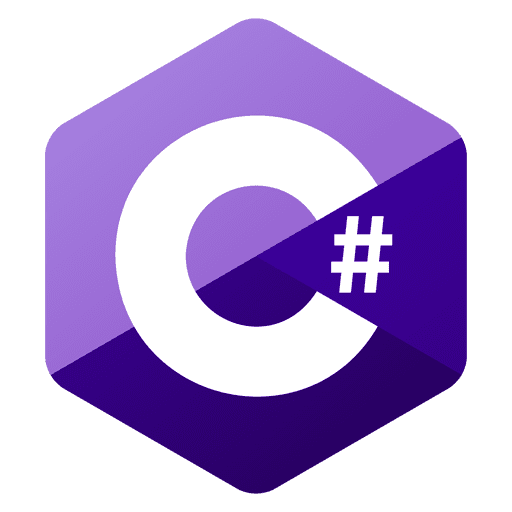This C#.NET training teaches non-experienced people how to create the Solutions/Applications using C#.NET. C#.NET is Microsoft’s entry into the world of managed programming. Using a syntax that is deliberately from Java, C++ and C, C#.NET achieves a natural trade-off of terseness and clarity, enabling programmers to express concepts in a clear and maintainable form. The recent enhancements to the language have made it even more powerful than before, allowing programmers to work with C#.NET in both an Object-Oriented and partially functional style.
C#.NET
By: Professor
Course Content
C#.NET
- Overview
- Features Of C#.Net
- Versions of C#.Net
- MSIL, CLR, CTS, CLS, BCL
- .NET Framework Architecture
- Versions, Editions, System Requirements
- Installation
- Project, Solution, Types of Applications
- Compiling and Running Application
- C#.NET Program Syntax With Ways Of Writing Main() Method
- System.Console class
- Data Types, Operators, Constants, enum
- Casting, Parsing, Conversion Methods, Boxing & Unboxing
- Working with DateTime
- Different Ways of Input Statements
- Arrays, System.Array Class, Reference , Shallow, Deep Copy
- Introduction To Programming Techniques, Drawbacks of Procedural programming, Importance, Features, Components of OOPs (class and object)
- Working With Modifiers, Call by value(Optional, named Parameters), Call by Reference (ref, out)
- Introduction To Inheritance, Shadowing, Casting, Virtual Methods & Method Overriding
- Static And dynamic binding, Sealed method And Sealed Class
- Abstract classes and Methods,
- Properties – set And get Blocks, Automatic, Readonly
- Interfaces – Implicit And Explicit implementation
- Exception Handling – try, catch, finally, throw – Built-in & Customized Exceptions
- Collections, Custom Generic methods, Classes , Built-in generic Classes, Reflection
- Operator Overloading, Type Inference, Partial Classes And Partial Methods
- Delegates, Anonymous Methods, Lambda Expressions, Events
- Overview of Garbage Collection – System.GC, IDisposable, Destructors, Finalizer/Dispose
- Structures Vs Classes, String Vs StringBuilder
- Type Inference, Object Initializers, Anonymous Types, Extension methods
- Introduction to Windows Forms Application, IDE Of Forms, Understanding Form Class Definitions
- Working with Multiple Forms
- Working With Windows Forms Controls, Graphics
- Creating Dialogs , Modal Dialogs – Customized, built-in, Modeless dialogs
- MDI Application
- User Controls, Runtime Controls
- Deployment Of Windows Forms Application, Creating setup project, installing and uninstalling Windows application
- Difference between DLL and EXE, Types Of DLLs
- Structure Of Assembly, Single File And Multi File Assembly, .Net Module
- Types of Assemblies, Namespaces, Accessing Modifiers In and Out of Assembly
- Introduction To streams, Types of Streams – Text Streams, Binary Streams
- FileStream, MemoryStream Classes ; File, FileInfo, DirectoryInfo Classes; StreamReader, StreamWriter Classes
- Serialization, Deserialization
- Introduction , Types Of Scheduling, Thread States
- Performing Async operations using Multi Threading
- Thread Synchronization
- Task Parallel Library – multi Threading (vs) Task Parallel Library
- Performing ASync operations using TPL
- Introduction To Database, RDBMS, SQL
- Evolution Of ADO.NET, Architecture of ADO.NET
- Server Explorer, Connection String – App.Config, .UDL File
- Connection, Command, Parameter, DataReader as Connection Oriented Model
- Introduction To Stored Procedures, Advantages, Executing Stored Procedures Thru C# Application
- Transactions – Single Database, Multiple Databases
- Overview of Typed Databases – Working with Oracle, Excel, Access
- What Is MARS?
- Dataset, DataTable, DataColumn, DataRow, DataAdapter
- DataAdapter Commands, SqlCommandBuilder
- Handling Concurrency While Updating Data in DB, DataViews
- Purpose Of Creating Foreign key Constraint, DataRelation
- LINQ To SQL (vs) Entity Framework, DbContent, DbSet
- EDM In – XML Representation Includes Designer Content And Runtime Content (SSDL, CSDL, C-S Mapping)
- Insert, Update, Delete Operations Using EF, DataGridView
- Calling Stored Procedures Using EF
- Immediate Mode And Differed Mode Execution
- Transactions In EF – Single DB, Multiple DBs
- Navigation Types : Accessing Data – With And Without Navigation
- Breakpoints, Immediate Window, F5, F10, F11
- Introduction To XML
- Rules Of XML Document
- Structure Of XML Document
- XML DOM Parser
- XML DataDocument
- Reading XML using Dataset
- XMLTextWriter And XMLTextReader
- Introduction to WPF,
- Different Views In WPF Environment
- Architecture Of WPF
- Differences Between HTML, XML, XAML
- Syntax Of XAML, WPF Controls, Multiple WPF Windows
- Brushes, Styles
- Animations And Transformations
- Working With Dataset In DataGrid
- 3-tier Architecture And N-tier Architecture


